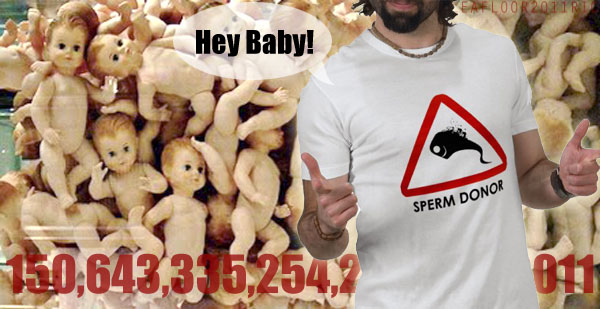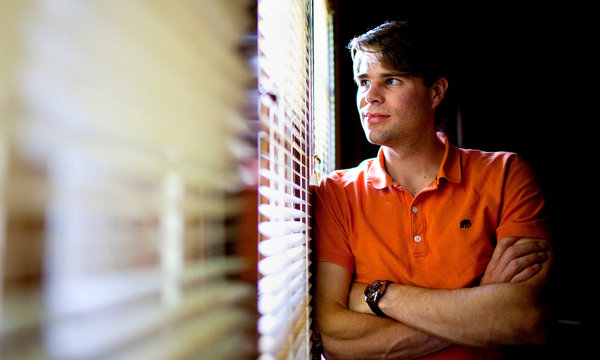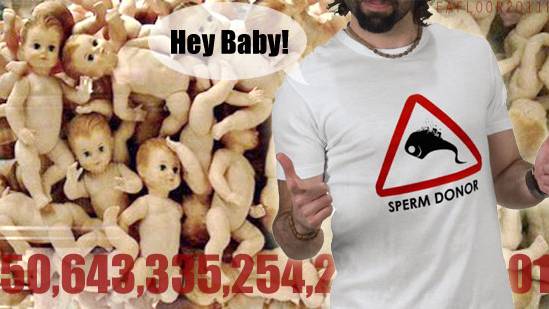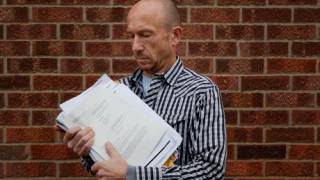One Sperm Donor with 150 Sons and Daughters
Source: nytimes.com

Cynthia Daily and her partner used a sperm donor to conceive a baby seven years ago, and they hoped that one day their son would get to know some of his half siblings — an extended family of sorts for modern times.
So Ms. Daily searched a Web-based registry for other children fathered by the same donor and helped to create an online group to track them. Over the years, she watched the number of children in her son’s group grow.
And grow.
Today there are 150 children, all conceived with sperm from one donor, in this group of half siblings, and more are on the way. “It’s wild when we see them all together — they all look alike,” said Ms. Daily, 48, a social worker in the Washington area who sometimes vacations with other families in her son’s group.
As more women choose to have babies on their own, and the number of children born through artificial insemination increases, outsize groups of donor siblings are starting to appear. While Ms. Daily’s group is among the largest, many others comprising 50 or more half siblings are cropping up on Web sites and in chat groups, where sperm donors are tagged with unique identifying numbers.
Now, there is growing concern among parents, donors and medical experts about potential negative consequences of having so many children fathered by the same donors, including the possibility that genes for rare diseases could be spread more widely through the population. Some experts are even calling attention to the increased odds of accidental incest between half sisters and half brothers, who often live close to one another.

Ryan Kramer, 20, of Pasadena, Calif., is the child of a donor. Photo: David Ahntholz for The New York Times
“My daughter knows her donor’s number for this very reason,” said the mother of a teenager conceived via sperm donation in California who asked that her name be withheld to protect her daughter’s privacy. “She’s been in school with numerous kids who were born through donors. She’s had crushes on boys who are donor children. It’s become part of sex education” for her.
Critics say that fertility clinics and sperm banks are earning huge profits by allowing too many children to be conceived with sperm from popular donors, and that families should be given more information on the health of donors and the children conceived with their sperm. They are also calling for legal limits on the number of children conceived using the same donor’s sperm and a re-examination of the anonymity that cloaks many donors.
“We have more rules that go into place when you buy a used car than when you buy sperm,” said Debora L. Spar, president of Barnard College and author of “The Baby Business: How Money, Science and Politics Drive the Commerce of Conception.” “It’s very clear that the dealer can’t sell you a lemon, and there’s information about the history of the car. There are no such rules in the fertility industry right now.”
Although other countries, including Britain, France and Sweden, limit how many children a sperm donor can father, there is no such limit in the United States. There are only guidelines issued by the American Society for Reproductive Medicine, a professional group that recommends restricting conceptions by individual donors to 25 births per population of 800,000.
No one knows how many children are born in this country each year using sperm donors. Some estimates put the number at 30,000 to 60,000, perhaps more. Mothers of donor children are asked to report a child’s birth to the sperm bank voluntarily, but just 20 to 40 percent of them do so, said Wendy Kramer, founder of the Donor Sibling Registry.
Because of this dearth of records, many families turn to the registry’s Web site, donorsiblingregistry.com, for information about a child’s half brothers or half sisters.
Ms. Kramer, who had her son, Ryan, through a sperm donor, started the registry in 2000 to help connect so-called donor families. On the Web site, parents can register the birth of a child and find half siblings by looking up a number assigned to a sperm donor. Many parents, she said, are shocked to learn just how many half siblings a child has.
“They think their daughter may have a few siblings,” Ms. Kramer said, “but then they go on our site and find out their daughter actually has 18 brothers and sisters. They’re freaked out. I’m amazed that these groups keep growing and growing.”
Ms. Kramer said that some sperm banks in the United States have treated donor families unethically and that it is time to consider new legislation.
“Just as it’s happened in many other countries around the world,” Ms. Kramer said, “we need to publicly ask the questions ‘What is in the best interests of the child to be born?’ and ‘Is it fair to bring a child into the world who will have no access to knowing about one half of their genetics, medical history and ancestry?’
“These sperm banks are keeping donors anonymous, making women babies and making a lot of money. But nowhere in that formula is doing what’s right for the donor families.”
Many of those questions were debated in Britain shortly after the birth there, in 1978, of Louise Brown, the first baby born using in vitro fertilization. In 1982, the British government appointed a committee, led by Mary Warnock, a well-known English philosopher, to look into the issues surrounding reproductive health.
The groundbreaking Warnock Report contained a list of recommendations, including regulation of the sale of human sperm and embryos and strict limits on how many children a donor could father (10 per donor). The regulations have become a model for industry practices in other countries.
“It is quite unpredictable what the ultimate effect on the gene pool of a society might be if donors were permitted to donate as many times as they chose,” Baroness Warnock wrote recently in an e-mail.
Without limits, the same donor could theoretically produce hundreds of related children. And it is even possible that accidental incest could occur among hundreds of half siblings, said Naomi R. Cahn, a law professor at George Washington University and the author of “Test Tube Families: Why the Fertility Markets Need Legal Regulation.”
Sperm donors, too, are becoming concerned. “When I asked specifically how many children might result, I was told nobody knows for sure but that five would be a safe estimate,” said a sperm donor in Texas who asked that his name be withheld because of privacy concerns. “I was told that it would be very rare for a donor to have more than 10 children.”
He later discovered in the Donor Sibling Registry that some donors had dozens of children listed. “It was all about whatever they could get away with,” he said of the sperm bank to which he donated. “It is unfair and reprehensible to the donor families, donors and donor children.”
Ms. Kramer, the registry’s founder, said that one sperm donor on her site learned that he had 70 children. He now keeps track of them all on an Excel spreadsheet. “Every once in a while he gets a new kid or twins,” she said. “It’s overwhelming, and not what he signed up for. He was promised low numbers of children.”
[...]
Read the full article at: nytimes.com
Video from: YouTube.com
Donor Unknown: Adventures in the Sperm Trade (Documentary)






















